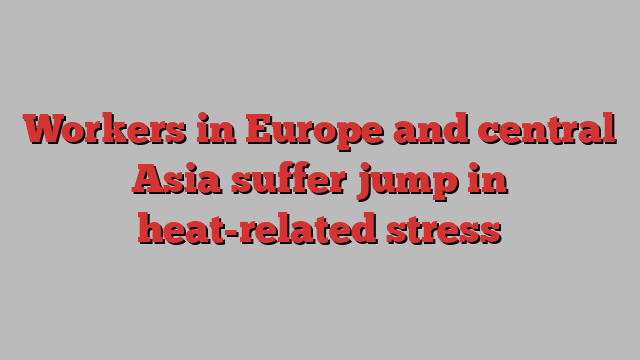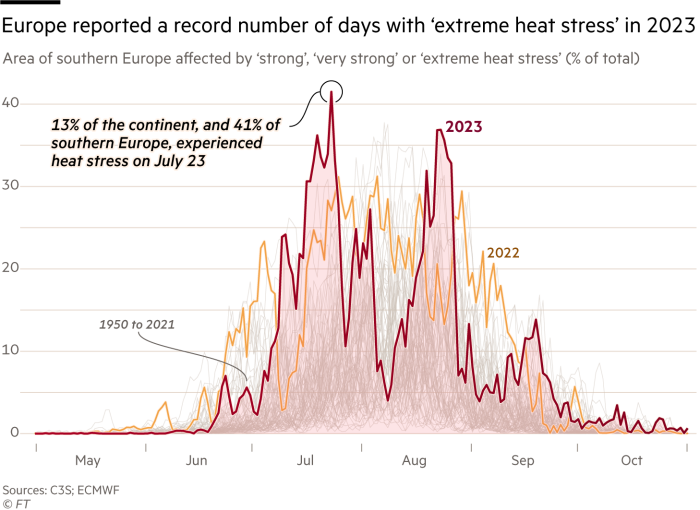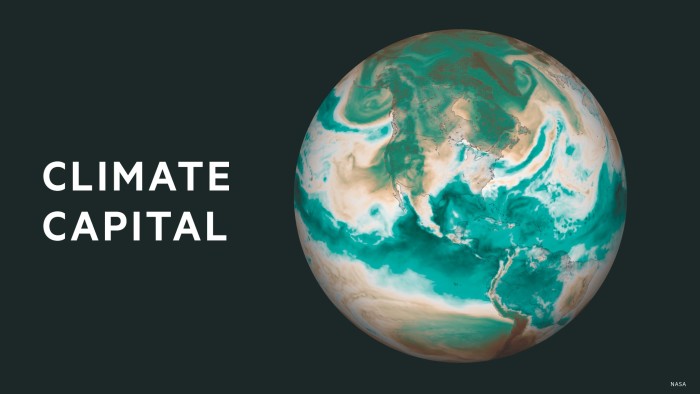
Stay informed with free updates
Simply sign up to the Climate change myFT Digest — delivered directly to your inbox.
The number of workers suffering from the “silent killer” of extreme heat in Europe and central Asia had increased by almost a fifth since 2000, the UN labour agency said, as the world this week experienced its hottest days.
The global average surface temperature of 17.16C reached on Monday surpassed the previous day’s record on Sunday by 0.06C, according to preliminary data from Copernicus, the European earth observation agency. It remained in a similar range on Tuesday.
UN secretary-general António Guterres said the weather extremes being experienced were symptoms of the “disease” of the “addiction to fossil fuels”. Burning of these fuels for heat and energy is the biggest contributor to global warming.
The International Labour Organization, a UN agency, said the fastest changing working conditions were in Europe and central Asia, where almost a third of the workforce was exposed to extreme heat.
The regions had greatest increase in the number of workers enduring excessive heat exposure, at 17.3 per cent between 2000 and 2020, or almost double the global average rise of 8.8 per cent. Europe is the world’s fastest warming continent.
This was matched by a rapid increase in the proportion of heat-related occupational injuries since 2000 to 2020, with a 16.4 per cent rise.

The proportion of heat related occupational injuries also jumped in the Americas, up 33 per cent over the same period.
By far the greatest proportion of the workforce enduring excessive heat, remained in Africa, the Arab states and Asia and the Pacific, however, where respectively some 93 per cent, 84 per cent and 75 per cent are affected, with a prevalence of outdoor physical, construction, agricultural or industrial work.
The ILO estimated that improved safety and health measures to prevent injuries from excessive heat in the workplace could save up to $361bn globally, including lost income and medical treatment expenses.
Overall, it said some 2.4bn workers — about 70 per cent of the global workforce — were now at high risk of extreme heat.
The ILO cited a study finding that if the core body temperature rises above 38C, physical and cognitive functions are impaired, and above 40.6C, the risk of organ damage, loss of consciousness and fatality, increases sharply.
“There is only so much heat that our bodies can endure,” said Alan Dangour, director of climate and health at Wellcome.
The UN’s Guterres called for workplace laws and regulations to integrate extreme heat risks, as well as the appointment of heat champions to drive government responses to extreme heat.
Governments needed to “turbo charge measures to phase out fossil fuels”, he said, including cutting global production and consumption of all fossil fuels at least 30 per cent by 2030.
Climate Capital

Where climate change meets business, markets and politics. Explore the FT’s coverage here.
Are you curious about the FT’s environmental sustainability commitments? Find out more about our science-based targets here